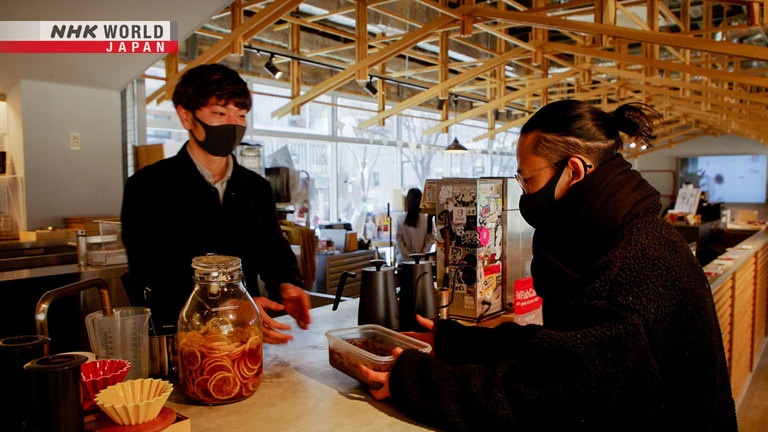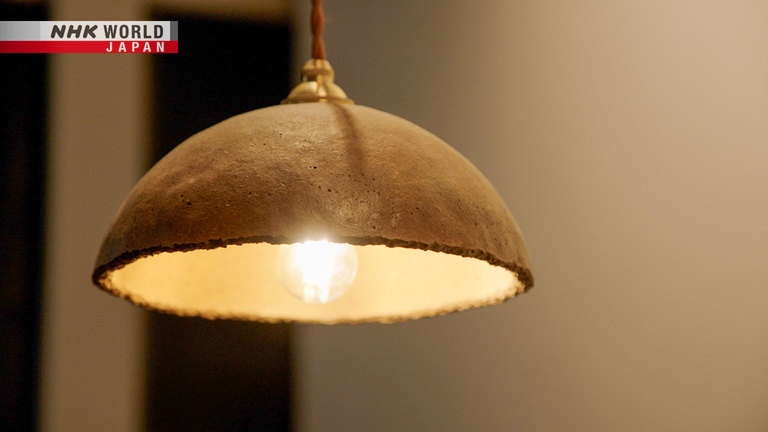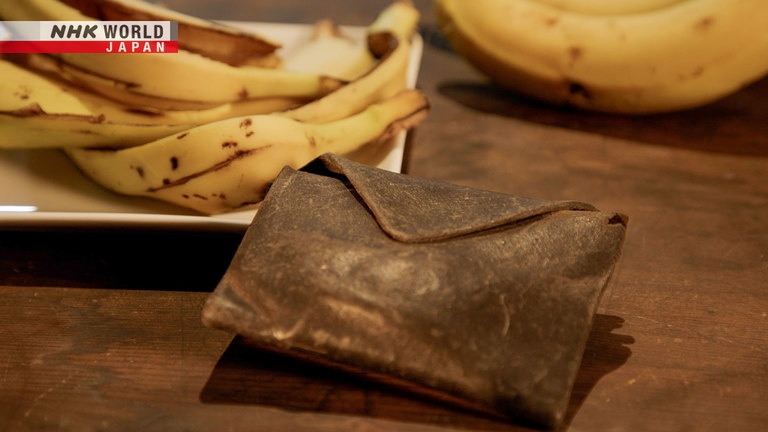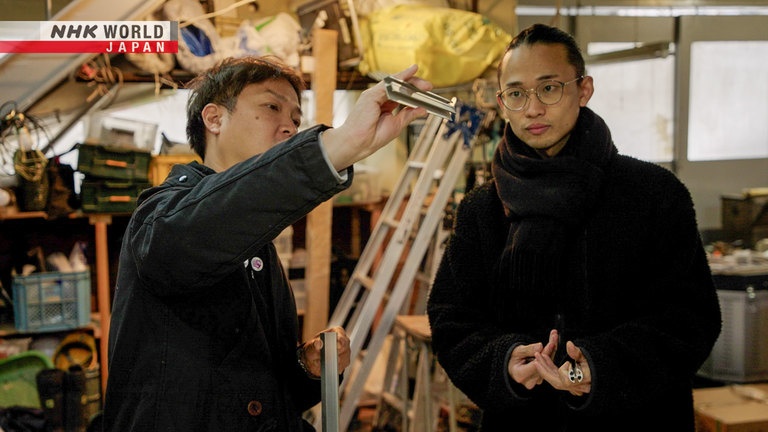Full Trash Alchemist
"They're not trash cans, but resource bins," says Murakami Yuki. His love of making goes back to childhood. And at college he developed his own banana peel leather. Transforming garbage and scrap into useful materials – lampshades from coffee grounds or chairs from old receipts – his creations are unique, but they're also as biodegradable as possible, with minimal environmental impact. This sort of alchemy has earned praise and serious interest from industries facing issues surrounding waste.




Transcript
Since ancient times, the Japanese have believed that a life force resides in all creations.
Valuing and caring for the things we use, a "Zero Waste Life."
Pointing the way to better living for a new era.
To me, garbage cans don't exist,
nothing is ever trash.
Nagoya, a major city in the central Japan.
Right beside a public square, we find a quiet café.
The rich aroma of coffee beckons to passersby.
It's known for its cup of the day, chosen to suit the weather and mood.
Murakami Yuki is a regular visitor.
But he's not here for a cup of coffee...
- My usual, please.
- Here you go.
Used coffee grounds.
Murakami gives coffee grounds new life in the products he makes.
Before, we just threw them out
as kitchen waste.
"There must be a use for them,"
This idea occurs to everyone in
the coffee business at least once.
I knew that disposing of them
was a problem for the café.
I tried to transform coffee grounds
into something people wanted.
This former printshop is where he does his work.
But what exactly is it that he makes?
Before processing the coffee grounds, he starts with a jute bag,
specifically, the kind used to ship bulk coffee.
Look, some unroasted beans.
The cut-up bags are further processed and pulverized into fiber in an industrial grinder.
Cutting apart the clumps with scissors, it's then added to the coffee grounds.
The next ingredient is a milk-based glue.
Murakami takes great care to avoid using more common adhesives.
Using only all-natural materials
makes the product biodegradable.
It ensures it goes back to the Earth,
that's why we chose milk-based glue.
The subtle aroma of coffee lingers, making the mixing a pleasant task.
He then pours it into a form, making sure to eliminate any fine air bubbles as it's molded into shape.
It's then kept at a set temperature for about a month to dry.
I monitor the condition and moisture,
and turn them over each day.
This one's reached the end of the month-long process.
Yes, it's hardened nicely.
It looks good.
Coffee grounds, unwanted and destined for the rubbish bin,
reborn as a charming lampshade that glows with an inner warmth.
With the same ingredients he also makes coffee tables, plant pots and vases.
Depending on the beans and how they're roasted,
the color and texture of the finished product varies, making each one unique.
Material made with coffee and milk.
Murakami calls it a café-au-lait base.
Every day we brew coffee, and throw
the grounds away as a matter of course.
It was such a waste, and that's what
inspired me to find some use for them.
Murakami was born in 1998.
Day in and day out, using anything close at hand, he always made his own toys.
At the time, he was obsessed with a particular TV program.
"Make it! Make it! Make it!"
"Make and Play!"
It was an arts-and-crafts show for kids.
Yeah! Watch it go!
They used materials like milk cartons, empty cans,
or plastic bottles, things commonly seen as rubbish.
As a kid I didn't think it was trash.
I always tried to come up with uses,
and actually make them for myself.
That's how I spent my childhood.
He went on to study at an art college.
Here's something he made while there.
It may look like an ordinary leather wallet at first glance, but...
It's made from banana peels.
Banana leather, made of banana skins.
Presented as his graduation piece, it was very well received.
Since then Murakami has transformed all kinds of waste products into new materials.
Made with old receipts, he calls this his "Re-seat."
Old plasterboard, transformed into colorful tiles.
Products that use the original material
in a way that can be seen and touched,
I want people to remember what it was;
to see it's a waste just to throw it away.
Thanks to his work more and more people are looking to reuse waste materials.
I'm experimenting with ways to reuse this.
Many young people gather at his studio for workshops and to develop new materials.
We gather clay items from
old folk houses being torn down.
I'm working on a way to turn it into
a material that can be 3D printed
as blocks to make walls or furniture.
One of these young innovators is co-developing a new material with Murakami.
Paper made from stale bread.
After blending, it's formed into sheets with a technique similar to making traditional "washi" paper.
The leftover liquid is then boiled to make ink, leaving no bread waste behind.
His collaborator is Okazaki Sayuri, a university student living in London.
They're currently working together remotely on the material's development.
Okazaki hopes to become a designer.
Last summer, she came to his studio for three weeks as a resident intern.
Her time with Murakami had a major influence on her work.
He puts a lot of thought into objects.
He taught me to empathize with them,
to converse with them, just like people
as a way to unleash the imagination.
I want to be a designer
who focuses on sustainability.
Murakami is currently being flooded with inquiries from businesses
struggling with waste material disposal.
Sign maker Nishihata Takumi has brought in scrap aluminum
that's inevitably generated in his industry.
Aluminum can of course be melted down and reused,
but, in search of a way to create new value, he's turned to Murakami for help.
You never see it in cross-section,
so we can emphasize that like so.
If people insist on eliminating waste,
factories like ours will close down.
If we don't work with people like
Murakami, to generate new value,
there won't be any future for us.
And it's not just an empty compliment,
he things he makes are actually cool.
That's really important, too.
Knowing its potential, we can make
a society where everyone uses waste.
Trash cans become resource bins,
full of important and useful things.
If we make this transformation,
the world will be a lot more interesting.